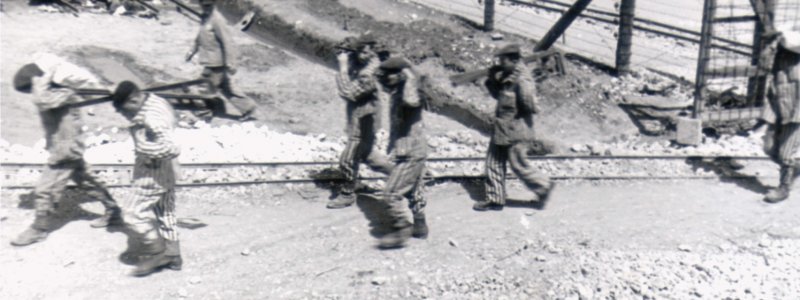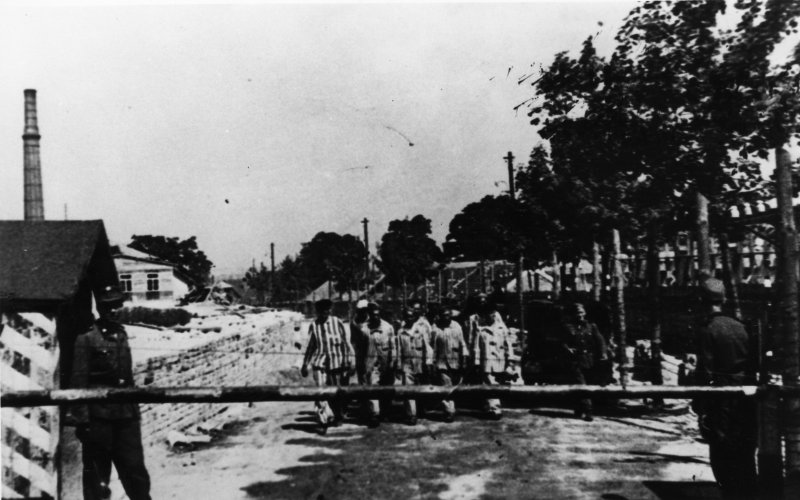The prisoners

Polish prisoners
In July 1943 the Arbeitserziehungslager, an educational labour camp for Poles, was established in the area. The camp was designed for people arrested during street round-ups in Kraków, military raids in towns near Kraków, who were frequently suspected of cooperating with the resistance movement, and even people convicted of trivial offences. The number of Polish prisoners, ranging from hundreds in mid-1943 to 3 thousand in 1944, increased after ‘Black Sunday’ on 6 August 1944, when about 6 thousand men were arrested in Kraków as part of a massive preventive operation conducted in the face of the outbreak of the Warsaw Uprising.

Other nationals
Tens of Romani families were detained in the camp from 1943. The Romani people had no contacts with other prisoners and were deprived of assistance from outside the camp, which resulted in a high mortality rate in their group.
When the labour camp was reorganized into a concentration camp in early 1944, a small group of German prisoners from the camps in the Greater German Reich were transferred to KL Plaszow. They were principally assigned the duties of camp functionaries.
In May 1944 the camp received transports of Jews from Hungary and Slovakia who were eventually transferred to KL Auschwitz. From the spring of 1944 prisoners from camps located in eastern part of the General Government were transferred to KL Plaszow. KL Plaszow then began to operate as a transit camp where prisoners were detained prior to being transferred to their final destinations.
The second half of 1944 saw the limiting of camp operations due to the approach of the Red Army. To hide the traces of crimes, the administration decided to gradually liquidate the camp infrastructure and deport the prisoners to other camps located inside Germany, such as Mauthausen, Ravensbrück, Gross-Rosen and Flossenbürg.
Initially about 10 thousand people were detained in the Plaszow camp, but their number increased as the camp infrastructure developed, to reach 24 thousand in mid-1944. According to current estimates, about 35 thousand prisoners were detained in KL Plaszow, and the site contains the graves of 6–10 thousand victims.
When the labour camp was reorganized into a concentration camp in early 1944, a small group of German prisoners from the camps in the Greater German Reich were transferred to KL Plaszow. They were principally assigned the duties of camp functionaries.
In May 1944 the camp received transports of Jews from Hungary and Slovakia who were eventually transferred to KL Auschwitz. From the spring of 1944 prisoners from camps located in eastern part of the General Government were transferred to KL Plaszow. KL Plaszow then began to operate as a transit camp where prisoners were detained prior to being transferred to their final destinations.
The second half of 1944 saw the limiting of camp operations due to the approach of the Red Army. To hide the traces of crimes, the administration decided to gradually liquidate the camp infrastructure and deport the prisoners to other camps located inside Germany, such as Mauthausen, Ravensbrück, Gross-Rosen and Flossenbürg.
Initially about 10 thousand people were detained in the Plaszow camp, but their number increased as the camp infrastructure developed, to reach 24 thousand in mid-1944. According to current estimates, about 35 thousand prisoners were detained in KL Plaszow, and the site contains the graves of 6–10 thousand victims.

Children in KL Plaszow
Regulations provided that only people aged 14 or more could be detained in the camp, but in reality, children were imprisoned here from the beginning of the camp’s operations. Initially, children stayed in the barracks unlawfully, but later they were moved to a Kinderheim (a children's home), specially established in the camp area. This children’s home existed until 14 May 1944, when it was destroyed, and the children were transferred to KL Auschwitz to be killed.
The KL Plaszow Memorial Museum in Kraków
The German Nazi Labour and Concentration Camp (1942–1945)
The KL Plaszow Museum is a cultural institution of Kraków City and is co-managed by the Ministry of Culture and National Heritage
This website uses cookies to provide its services in accordance with the Cookies Policy. You can specify the conditions for storing or accessing the cookies mechanism in your browser.


